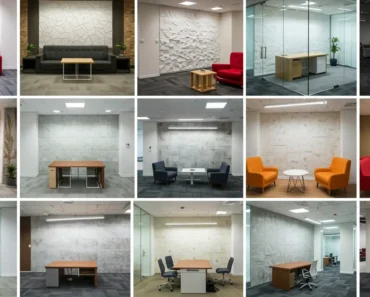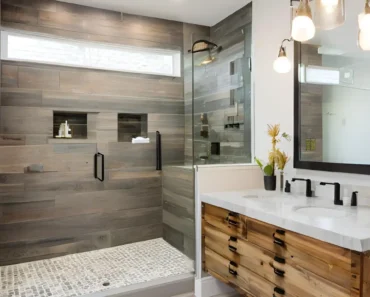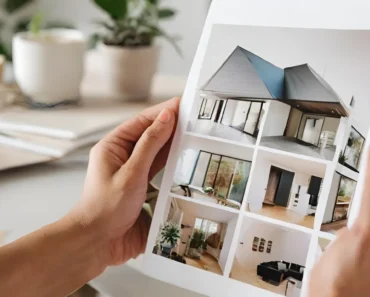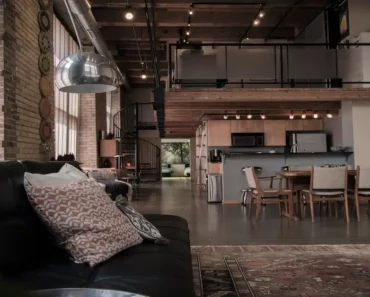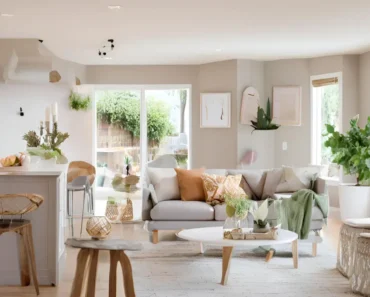Find the ideal baseboard material to protect and enhance your home’s interiors.
You step into a room. The walls meet the floor. Skirting hides that joint. It guards against scuffs. It adds style. But what type of skirting is best? Homeowners face this question during remodels. Choices range from wood to PVC. Each offers unique benefits. Trends in 2025 favor sustainable options. The US home remodeling market reaches $522.5 billion this year. It grows at 5% CAGR to $812.8 billion by 2034. You deal with problems like moisture damage. Solutions include proper sealing. This guide covers materials, pros, cons, and tips. You learn to pick skirting that fits your space. Let’s explore.
Understanding Different Types of Skirting
Skirting boards frame rooms. They cover gaps. They protect walls. Builders use various materials. Wood provides natural appeal. MDF offers smooth finishes. PVC resists water. Metal adds modern edges.
Homeowners select based on needs. Kitchens need moisture-proof types. Living rooms suit aesthetic woods. Each type of skirting serves a purpose. It ties floors to walls. It hides wires in some designs.
In my work, I see skirting elevate spaces. A simple change transforms rooms. The right type boosts home value. Reports from the National Association of Home Builders note remodels gain 5% in 2025. Skirting plays a part. Avoid mismatches. Match to decor for cohesion.
The Purpose of Skirting in Homes
Skirting prevents damage. Furniture hits it first. It blocks drafts. It improves insulation. Designers use it for visual flow. Tall types add height. Short ones keep profiles low.
Statistics show aging homes drive remodels. Nearly half of US homes predate 1980. Owners update interiors. Skirting fixes gaps in old structures.
Evolution of Skirting Materials
Early homes used solid wood. Modern options include composites. PVC emerged for durability. 2025 sees eco-materials rise. Reclaimed wood reduces waste.
Case study: A Seattle family chose PVC for their basement. It resisted floods. The space stayed dry. Skirting adapts to challenges.
- Protects from daily wear.
- Enhances room design.
- Conceals imperfections.
- Supports energy efficiency.
Know the types. Make informed choices.
Popular Materials for Skirting Boards
Materials define skirting performance. Solid wood leads for tradition. MDF fits budgets. PVC handles wet areas. Composites blend benefits.
Solid wood comes from trees like oak or pine. It shows grains. MDF presses fibers. It paints well. PVC molds from plastic. It bends easy.
Trends favor HDF and WPC. The market sees 5.2% growth in residential trade. Choose for room function. Bathrooms need PVC. Halls suit wood.
Wood vs. Synthetic Options
Wood feels warm. Synthetics last longer in damp. Wood needs sealing. PVC wipes clean.
| Material | Key Features | Best For |
|---|---|---|
| Solid Wood | Natural grain, durable | Living rooms |
| MDF | Smooth, affordable | Budget projects |
| PVC | Water resistant | Bathrooms |
| Metal | Modern look | Industrial designs |
Test samples at home. See how light hits them. This guides decisions.
Emerging Composites
WPC mixes wood and plastic. It resists scratches. HDF densifies fibers. It suits high traffic.
A New York renovation used WPC. It held up to kids. Owners saved on repairs.
Factors to Consider When Selecting Skirting Type
You evaluate several aspects. Durability matters in busy homes. Cost fits budgets. Moisture resistance protects wet rooms.
Aesthetics shape looks. Installation ease saves time. Maintenance needs influence choices. Sustainability appeals to green buyers.
Data shows 54% of homeowners renovated in 2024. Many focus on interiors. Balance factors for success.
Room-Specific Needs
Bathrooms demand PVC. Living areas prefer wood. Kitchens need easy-clean surfaces.
A Florida home used MDF in dry rooms. PVC in baths. It prevented issues.
Budget Considerations
MDF costs less. Wood invests more. Calculate per foot. Factor labor.
- Assess traffic levels.
- Check humidity.
- Match to style.
- Plan for upkeep.
Think long-term. Quality lasts.
Pros and Cons of Common Skirting Materials
Each material has trade-offs. Solid wood endures knocks. It shows character. But it warps in damp. MDF paints smooth. It costs low. Yet it swells with water.
PVC resists moisture. It installs quick. Drawbacks include plastic look. Metal offers sleek lines. It dents easy.
Weigh options for your home.
Detailed Comparison
| Material | Pros | Cons |
|---|---|---|
| Solid Wood | Durable, versatile, natural | Expensive, warps |
| MDF | Cheap, smooth finish | Swells in moisture, chips |
| PVC | Waterproof, easy install | Less aesthetic |
| Metal | Modern, durable | Dents, cold feel |
In a Chicago project, MDF failed in humidity. Switched to PVC. Problem solved.
Making the Right Choice
Match pros to needs. Mitigate cons with treatments.
Sustainable Skirting Options for Eco-Conscious Homes
Green choices rise. FSC-certified wood ensures responsible sourcing. Reclaimed materials reuse old timber. Composites use recycled fibers.
2025 trends highlight low-emission options. Market growth ties to sustainability. 60% of buyers prefer eco-types.
I recommend checking certifications. They guarantee ethics.
Top Green Materials
- Reclaimed Wood: Unique, reduces waste.
- FSC Oak: Sustainable harvest.
- WPC: Recycled plastic mix.
- HDF: Dense, eco-friendly fibers.
A California build used reclaimed pine. It added character. Cut emissions.
Sourcing Tips
Look for labels. Buy local. Visit mills.
Installation Tips for Various Skirting Types
Install correct for longevity. Measure walls. Cut angles for corners. Use glue or nails.
For wood, acclimatize first. PVC clips on. MDF nails easy.
DIY tip: Use mitre box for cuts.
Step-by-Step Guide
- Remove old skirting.
- Prepare surfaces.
- Cut pieces to fit.
- Attach secure.
- Seal edges.
A homeowner in Texas installed MDF. Used adhesive. Saved time.
Material-Specific Advice
Wood: Nail into studs. PVC: Clip systems. MDF: Avoid wet.
Skirting Trends in 2025
Designs lean minimal. Clean lines prevail. Tall profiles add drama. Colors like neutrals dominate.
Integrated tech hides cables. Eco-finishes grow.
Key Styles
| Trend | Details |
|---|---|
| Minimalist | Slim heights |
| Statement | Over 150mm |
| Shadow Gap | Floating effect |
| Colored | Bold contrasts |
An LA designer used shadow gaps. Created illusion.
Future Directions
Hybrids combine materials. Smart features add value. Check resources like This Old House.
Common Problems with Skirting and Fixes
Issues arise. Damp causes rot. Gaps form from settling. Mould grows in humidity.
Fix by addressing sources. Seal for moisture. Fill gaps with caulk.
Rising damp needs surveys. Penetrating damp requires leak repairs.
Handling Damp Damage
Remove rot. Treat walls. Replace boards.
A UK case fixed gutters. Stopped penetration.
Prevention Strategies
- Ventilate rooms.
- Seal surfaces.
- Monitor leaks.
- Use resistant types.
Act early. Avoid costs.
Key Takeaways:
- ✓
PVC excels in wet areas for resistance. - ✓
Solid wood provides lasting beauty. - ✓
MDF offers value for dry spaces. - ✓
Sustainable options cut impact. - ✓
2025 favors minimalist designs.
Frequently Asked Questions
What type of skirting is best for bathrooms?
PVC stands out for bathrooms. It resists water. It prevents swelling. Seal edges for extra protection. In steamy spaces, PVC lasts years. Homeowners report no warping. Alternatives like treated MDF work if sealed well.
Is MDF skirting durable enough for high-traffic areas?
MDF suits moderate traffic. It dents under heavy use. Choose denser versions. Paint for protection. In halls, pair with bumpers. Many use it successful in homes without pets or kids.
How do I prevent mould on skirting boards?
Control humidity. Use dehumidifiers. Clean regular with vinegar mix. Ventilate spaces. Fix leaks prompt. This stops growth. In damp climates, choose resistant materials.
What sustainable skirting options exist?
FSC wood leads. Reclaimed timber adds uniqueness. WPC uses recyclables. These lower footprints. Pair with low-VOC paints. Trends show rising demand for green choices.
Can I install skirting myself?
Yes, with tools. Measure accurate. Cut miters. Use adhesive or nails. Start in corners. Practice on scraps. Many DIYers complete it in a day.
Final Thoughts
Picking the best type of skirting improves your home. PVC handles moisture. Wood brings warmth. MDF saves money. Consider factors like cost and durability. Follow trends for modern looks. Install proper. Fix issues early. Now, assess your rooms. Gather samples. Begin updates. Your space gains polish.
